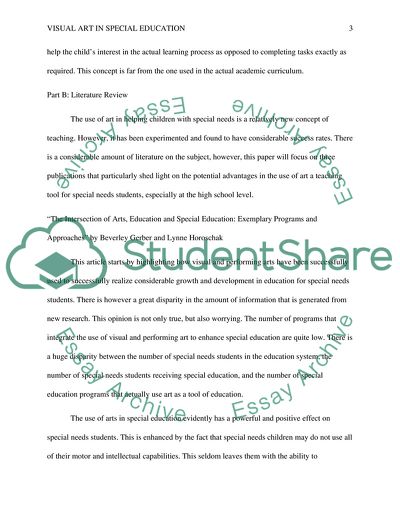Cite this document
(How to Effectively Use Visual Art to Teach Special Needs Students Annotated Bibliography Example | Topics and Well Written Essays - 1250 words, n.d.)
How to Effectively Use Visual Art to Teach Special Needs Students Annotated Bibliography Example | Topics and Well Written Essays - 1250 words. https://studentshare.org/education/1834909-beginning-your-personal-action-research-journey-with-a-literature-review
How to Effectively Use Visual Art to Teach Special Needs Students Annotated Bibliography Example | Topics and Well Written Essays - 1250 words. https://studentshare.org/education/1834909-beginning-your-personal-action-research-journey-with-a-literature-review
(How to Effectively Use Visual Art to Teach Special Needs Students Annotated Bibliography Example | Topics and Well Written Essays - 1250 Words)
How to Effectively Use Visual Art to Teach Special Needs Students Annotated Bibliography Example | Topics and Well Written Essays - 1250 Words. https://studentshare.org/education/1834909-beginning-your-personal-action-research-journey-with-a-literature-review.
How to Effectively Use Visual Art to Teach Special Needs Students Annotated Bibliography Example | Topics and Well Written Essays - 1250 Words. https://studentshare.org/education/1834909-beginning-your-personal-action-research-journey-with-a-literature-review.
“How to Effectively Use Visual Art to Teach Special Needs Students Annotated Bibliography Example | Topics and Well Written Essays - 1250 Words”. https://studentshare.org/education/1834909-beginning-your-personal-action-research-journey-with-a-literature-review.


